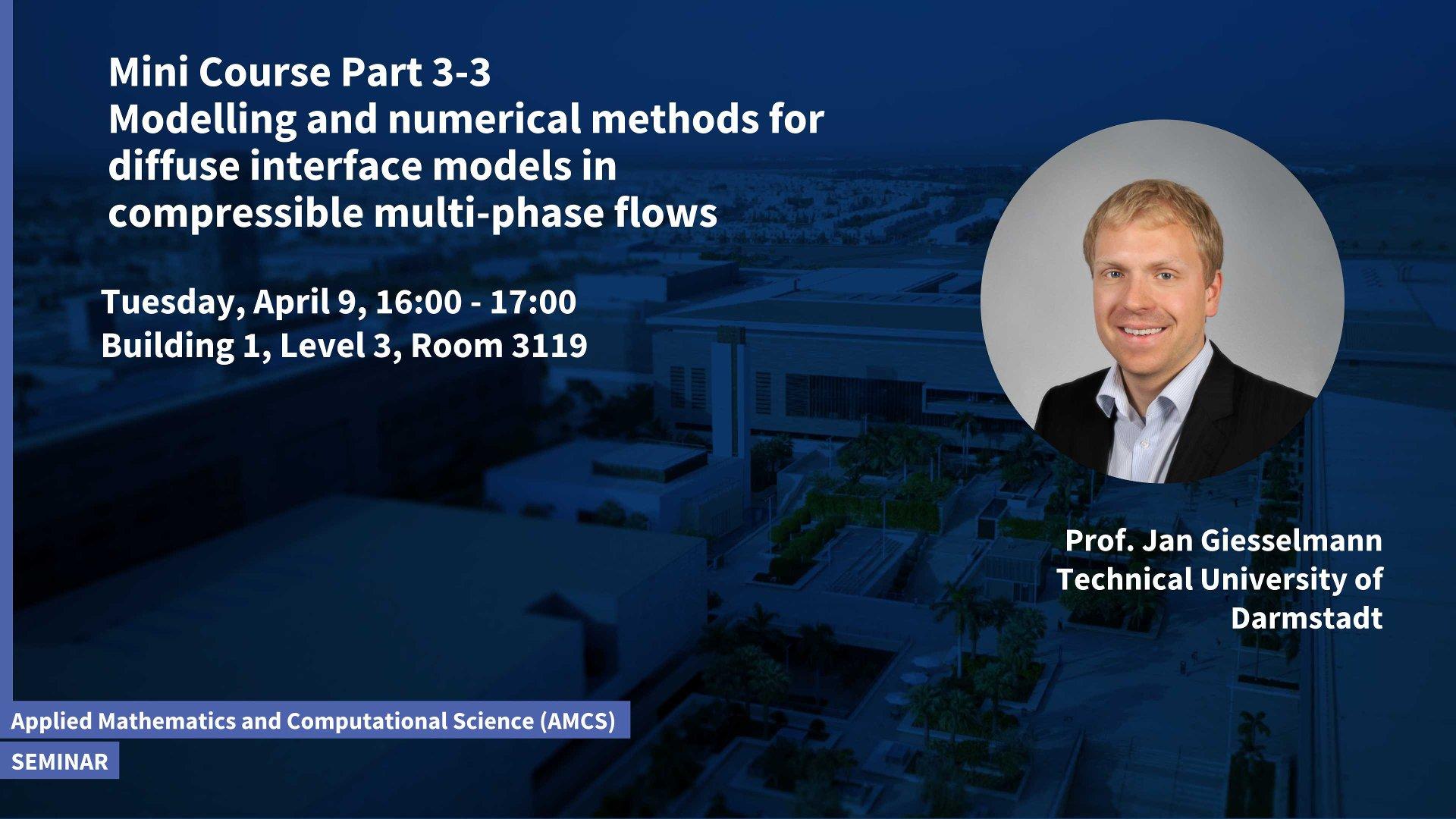Abstract
In this course we consider multi-phase flows, i.e., flows of one substance which is present as liquid as well as vapor. We focus on models that resolve individual bubbles/droplets and that treat both phases as compressible. We will also discuss incompressible/low Mach limits, since in most applications the liquid is nearly incompressible. Understanding and simulating such small-scale models is important in order to obtain information which can be used in larger scale models for e.g. sprays which play important roles in processes of practical interest as diverse as combustion, chemical engineering, and cloud formation. For the situation at hand, there exist two main classes of models: 'Diffuse interface' (DI) and 'sharp interface' (SI) models. In SI models, fields (e.g. density, velocity, temperature) are discontinuous across a hypersurface separating the liquid from the vapor phase and jump conditions at the interface need to be satisfied. In contrast, in DI models the fields vary smoothly but with large gradients across a thin layer. DI models solve partial differential equations in the transition region and their solution-concepts are easy to interpret when droplet formation, coalescence or other topological singularities take place. DI models usually contain a small parameter which determines the thickness of the interfacial layer and sending this parameter to zero leads to SI models which are called 'SI limits' of the corresponding DI model. Investigating SI limits of DI models provides significant insights into the properties of the models, since the physical basis of SI models is more transparent. The outline of the lecture series is as follows: Lecture 1: We discuss how fundamental principles such as conservation laws (for mass, momentum and energy) and the second law of thermodynamics can be used to derive DI models for compressible multi-phase flows. We will, in particular, review the derivation of so-called Navier-Stokes-Allen-Cahn and Navier-Stokes-Korteweg models. Furthermore, we study incompressible limits of these equations. Lecture 2: We derive (on a formal level) SI limits of the models discussed in Lecture 1. This allows us to investigate the issue of surface tension incorporated in DI models in more detail. Lecture 3: We give a brief introduction to Discontinuous Galerkin schemes for compressible fluid flows and, afterwards, explain how such schemes can be employed for solving the Navier-Stokes-Korteweg system.
Brief Biography
Jan Giesselmann studied mathematics at University of Bielefeld. After completing his studies he moved to University of Stuttgart where he obtained his PhD in 2011. After spending some time as researcher at Weierstrass Institute (Berlin) and University of Crete he returned to University of Stuttgart where he defended his habilitation in 2015.
The schedule of the Mini-Course is following
- Tuesday April 2nd, 4-5pm
- Sunday April 7th, 4-5pm
- Tuesday April 9th, 4-5pm

